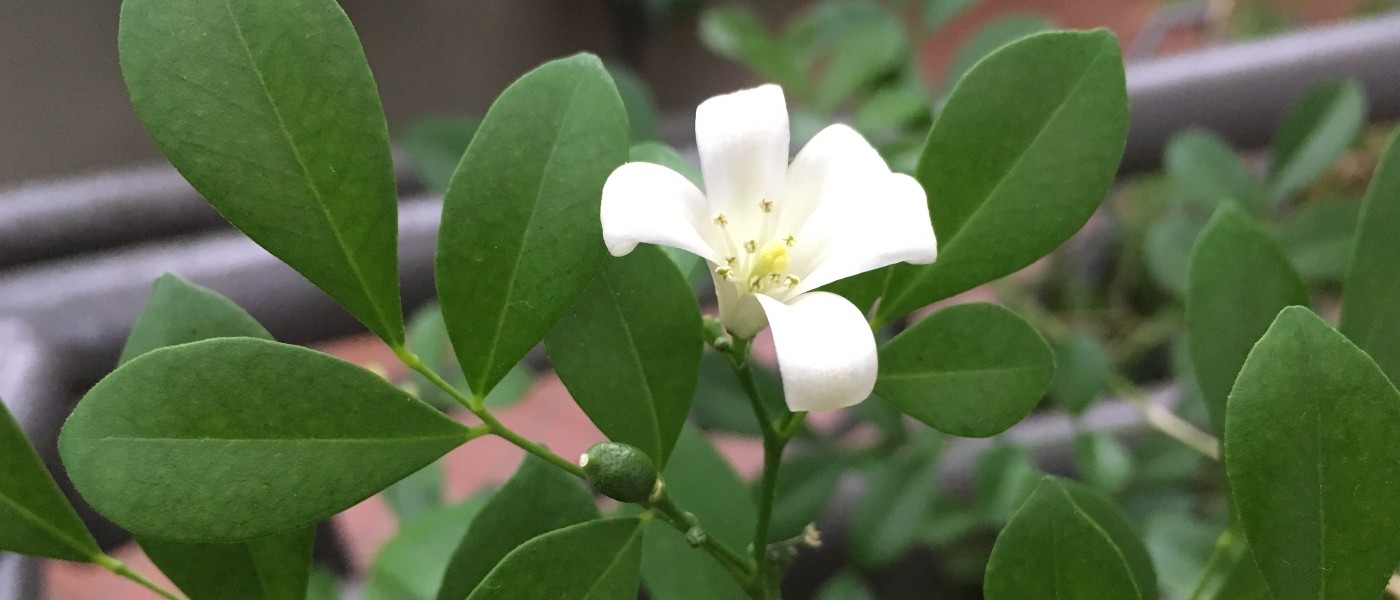Citrus Blossoms, Jasmine, and More Fragrant Flowers in the Conservatory
Stop in at the Entry House of the Steinhardt Conservatory and enjoy the fragrant plants on display this winter. Curator Caitlin Daley selected a variety of potted citrus, jasmine, gardenia, and lady-of-the-night plants with fragrant blossoms that will bloom in succession over the winter.
Scientists have identified 1700 of the different scent compounds produced by flowers. Most of this effort is for the benefit of attracting pollinators, and a single flower's scent may be made up of as many as 100 individual compounds.
Daley featured citrus plants for their intoxicating fragrance and to help highlight the connection between commonly eaten fruits and the plants that make them. Several are now either in bloom or fruiting—or both. She included other fragrant plants, like jasmines, that would thrive and bloom in the filtered light and warm humid air of the conservatory. Visit often and inhale deeply!
Duncan Grapefruit
Citrus × aurantium ‘Duncan’
Once a common breakfast fruit in the United States, this flavorful, seeded grapefruit fell out of favor as seedless varieties became more popular. It’s having a resurgence now and is considered an heirloom. The potted specimen on display now has both fruit and flowers, and the blossoms' wonderful fragrance fills the room.
Downy Jasmine
Jasminum multiflorum
This jasmine species is native to India, where petite, fragrant flowers are sometimes made into garlands for wedding ceremonies.
Orange Jessamine
Murraya paniculata
A member of the citrus family, not a jasmine, this plant has flowers that smell a lot like orange blossoms and develop into a small kumquat-like fruit.


